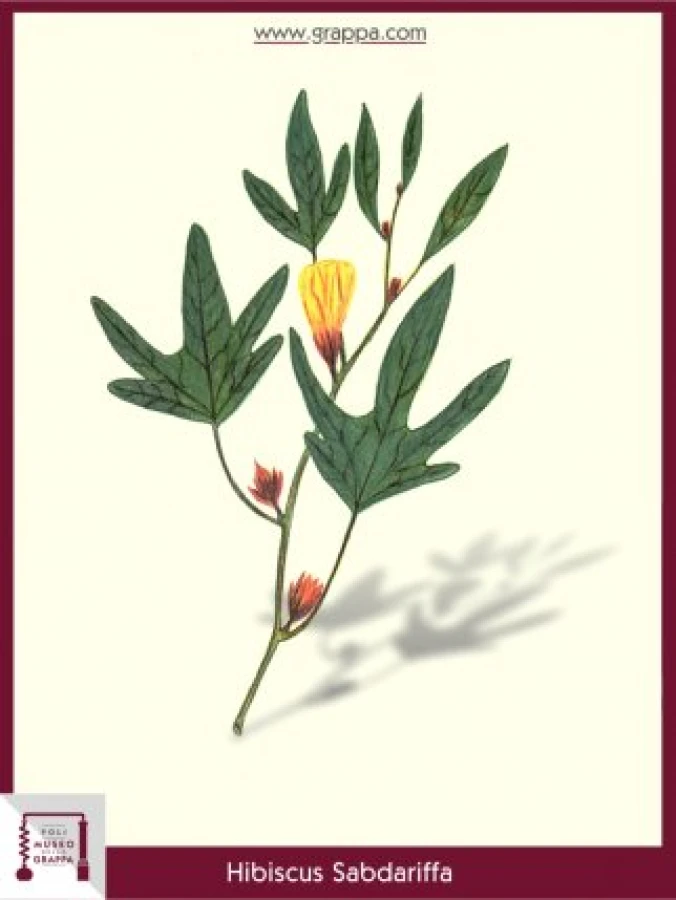A colonial liqueur
Roselle, Carcade
A colonial liqueur
Plant:
Roselle, Carcade
Plant Part:
flower
Plant Properties:
digestive, diuretic, expectorant, tonic, nerve-strengthening, antiseptic, febrifugal, thirst-quenching, hemostatic, refreshing, antiscorbutic, emollient
Description:
The drink called karkadé was all the rage, especially in Italy, between the 30ies and the 40ies, when it was regarded as a digestive, thirst-quenching and lepid tonic water. It was then and still today obtained by means of maceration of dried petals of the Roselle, a very common plant in the equatorial and tropical zones.
In the 1930s, these species of plants were particularly successful in Italy, as they were in search for tea substitutes of national or colonial origin.
Even today, the Karkadeh remains a respectable beverage, consumed as a thirst-quenching digestive tonic water, due to its content of sucrose, malic acid and natural dyes.
Due to its organoleptic properties and its color, the plant is used for the production of alcoholic beverages.
Ingredients:
- 2 handful of petals
- 1 liter of Grappa
Preparation:
Two handful already dried petals are soaked for two weeks in one liter of Grappa in a dark place, resulting in an intense red color and in a taste, typical of Karkadeh.
It is a liqueur that can be drunk in the summer as a thirst-quencher by adding the same amount of water, a few ice cubes and an orange slice.


